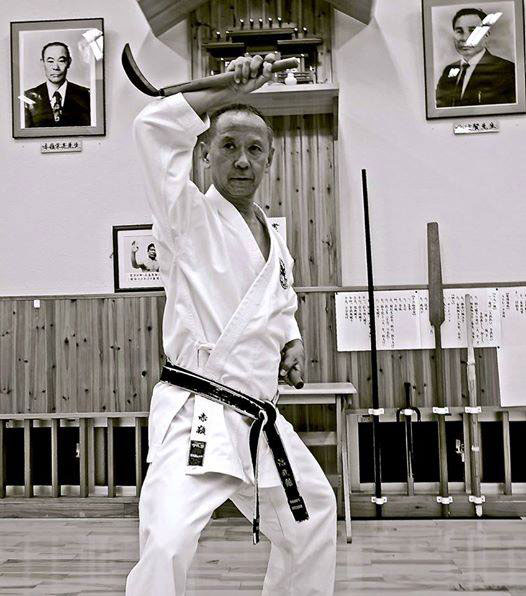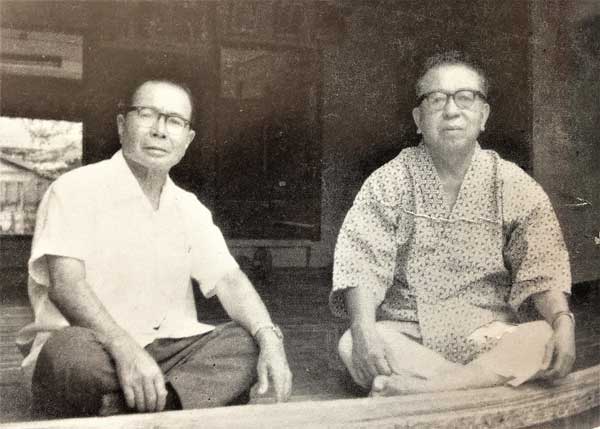Ryūkyū Kobudō 琉球古武道 / by Itzik Cohen
The literal interpretation of the term "Kobudō" is an "old military way".
One should ask what is common to weapons in both civilian and military environments. Many legends have been woven around the origin of ancient “traditional” weapons and its use. From historical point of view, it is difficult to pinpoint the exact combative origin of some weapons such as Nunchaku or Sai. Some theories attribute the use of Nunchaku and Sai to warrior monks existed in China during the Song Dynasty 宋朝 (960-1279). The number of theories is many as the number of disputes about this topic. Some of these weapons are common in various variations in East Asia as well as in the west. If we think deeply, we find that this convergent evolution makes sense.
Focusing on our scope, Ryūkyū Kobudō , the simple fact is that those who engaged with the usage of these weapons as well as the combat development of it were not by poor hard-working farmers, but by educated officials from upper social classes who served the government and the royal family, and they were very skilled. We will discuss this later in the article.
The use of weapons has been in Ryūkyū Islands for hundreds of years, but their use has gained momentum as a result of course of events on the axis of history, where there were a number of incidents in which locals were forbidden to carry weapons such as swords.
First prohibition was imposed King Shō Hashi 尚巴志who unified the three kingdoms: Chūzan 中山, Nanzan 南山 and Hokuzan 北山into one kingdom, Ryūkyū circa 1429. He published “The act of eleven-distinction document”, which prohibited the carrying of weapons on local residents.
Second prohibition was in 1480, King Shō Shin 尚真, imposed a ban on carrying weapons too.
Third prohibition was in 1609, when the Japanese Satsuma took control of the islands and prohibited the importation and carrying of weapons to the inhabitants.
Historically we know the facts that after King Shō Hashi unified the Kingdom, he established police force known as “Chikosai”. According to some reliable sources these professional skilled security guards were also equipped with “Sai”. Then in 1609, the Japanese Satsuma invasion to the islands provided an additional boost to the use of these tools. However I should clearly note that the ban on carrying and using weapons was not total. In fact there are historical evidences (Chinese, Korean and Japanese sources from the 15th century) which testify about the use of these weapons by the Ryūkyūan nobility and the Security Forces. These weapons include swords, spears as well as gun powder, firearms (Fire Pipe 火筒; Japanese:”Futsurōki”, “Ishibiya”) and even cannons. These activities were under the authority’s inspection before and after Satsuma invasion. There are historical evidences for the use of these weapons.
[For more information please refer to the book: Karate Uchina-Di 沖縄手/By Itzik Cohen,
Chapter: The Bond between Bare-Hand Art and the use of Weapons (Kobudo), page 418.
Cannons: Pages: 65, 103, 121-3, 185, 218, 419, 593, 595].
Since the knowledge of martial arts and local Kubudo in Ryūkyū Islands was secretly transferred without written documentation, and on the top of it the little that existed was destroyed under the heavy American bombardments during World War II, it is very difficult to trace the facts on the axis of history. Nevertheless, we find references to Ryūkyū-Kobudo in poems, paintings and artefacts, as well as in some more historical documents, indicating that at the beginning of the 12th century the Ryūkyūans were engaged in Bo-Jutsu and Yaribo. The roots of some of these weapons are found in China, but similar to "Empty-hand", the Kobudo in the islands also absorbed local uniqueness of structure, material and the nature of using it.
This information is backed up by Chinese and Japanese historical documents attesting to military or, more specifically, security use in the service of the authorities e.g. Weapons on Ryūkyūan ships in order to secure the cargo on and to secure diplomats mainly from pirate attacks.
(The pirates were military men and skilled seamen. They gathered from different armies and had quite power naval. They also posed a significant threat to large kingdoms such as China, Korea and Japan).
The Art of Ryūkyū Kobudō includes agricultural tools and instruments in the residential environment that have been converted into weapons, yet contrary to the popular belief that the weapons were used by poor peasants and commoners, in practice these weapons, as well as an Empty-hand Combat, were staffed by government officials who also served as security guards in the royal family and diplomatic missions. As a general rule, it was only later, after the middle of the 19th century, that Classic Martial Arts had enter to the civilian environment.
“Bo/Kun” for example was used also by farmers for the purpose of guarding the crop warehouses, for example. However, the “Bo/Kun” was used by skilled security guards serving the government and the Royal House both as a weapon and as a training tool to imitate spear for example.

Akamine Hiroshi Sensei
The weapons were made of simple raw materials, such as wood, metal and rope, and each instrument has unique features. The long wooden pole, for example, was used for long ranges. Sai and Tunfa were used for shorter ranges, while the Nunchaku is a weapon that allows freedom of movement and unique manoeuvre ability because of the rope connecting the two short wooden poles.
Well-known figurines from the Empty Hand Combat, that is Ryūkyū-di 琉球手 (Ancient Karate) used these weapons. Later in the 19th-20th centuries, also famous figures of Okinawan Karate were skilled in such weapons. Chotoku Kyan learned from Chatan (Chirkata) Yara and Tokumine Peichin. Mabuni Kenwa studied "Bo" and "Sai" from Seisho Arakaki. Motobu Choki practiced the "Bo". Miyagi Chojun received Kobudo training under Shinken Taira. Going further in time, very good and warm relationship was between Higa Yuchoku Sensei and Akamine Eisuke Sensei.
There are common motifs in techniques between Ryūkyū-di 琉球手and Ryūkyū Kobudō 琉球古武道, ancestor of today’s Okinawan Karate and Kobudō. No wonder about it, both Karate and Kobudō were developed concurrently at same time and environment, for same purpose and by same people. Karate and Kobudō complete each other and in fact are one.
However it is important to distinguish the two. Certain resistance and movements that are appropriate for one weapon or another are not necessarily optimal for Empty Hand Combat and therefore the distinction between the two is important and I believe is necessary.

Taira Shinken and Higa Yuchoku Sensei
Taira Shinkin returned from Japan to Okinawa in 1940 and, seeing the declining popularity of Ryūkyū Kobujutsu (the local martial arts with weapons), he established an organization to preserve and promote the art of using these weapons. This organization has been recognized by leading personalities of various styles.
It should be noted that the Ryūkyū Kobudō 琉球古武道is an art by methodology, Kihon, Kata and combat drills. There are orderly learning methods such as know how to grasp the tool and how to use it. Today, the art of local weapons is widespread in Okinawa and many Karate-ka(s) are also engaged with Ryūkyū- Kobudō.
This article was written originally on 7th 0f May 2013. I revised it and republished it.
Itzik Cohen
12/07/2018
Additional info
Back to Articles List